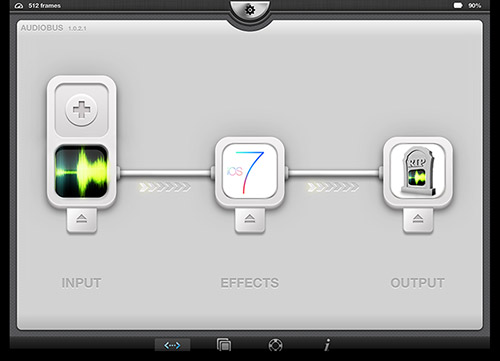
Does iOS7 mean the death of Audiobus as we know it?
Well, it’s been a year since Audiobus – the third-party magicapp that routes audio between iOS apps – was released and it looks like we may be saying a quick and tearful goodbye… sort of. As amazing as Audiobus has been it always was considered a bit of a hack around Apple’s walled garden, even to its makers. Since then Apple has clearly seen the value of offering audio and midi routing between apps and has now included it as a core feature with the release of iOS 7. It’s now up to the app developers to update existing audio apps to support the new routing system – a bit of a bitter pill to swallow for some considering that the mad scramble to support Audiobus is just barely in the rear-view mirror.
To hasten adoption of the new standard, it seems there are quite a few bugs popping up between the way Audiobus routes signals between apps and the new way under iOS 7. That leaves developers with a choice between focusing support for the current accepted standard (Audiobus) vs a potentially limitless future that, perhaps unfortunately, only Apple can provide with Inter-App. If developers rally around Inter-App, where would that leave Audiobus? There may still be room for Audiobus in the marketplace yet, but it may possibly be in a diminished role that serves as an add-on to what Inter-App audio ends up providing. Perhaps it can function as a handy visualized routing system for all midi and audio paths currently flowing on your device (although it looks like it may have competition going forward with JACK)
As it stands, it’s still a bit of a wild west in the land of audio production on iOS. Standards have yet to be set in stone, and there are still growing pains to be felt. But with the release of Inter-App audio it appears the future is a little bit clearer, and brighter, for everyone using the platform. Until then, expect to see a lot of bullets flying in attempt to shoot down those bugs.
May 2014 UPDATE: Audiobus 2.0 has hit the App Store with unlimited input chains as a new core feature, and seems to have ironed out much of its existing iOS 7.0 stability issues. Meanwhile Inter-App audio is still struggling with adoption and has a lot of bugs to iron out. The audio production game is still wide open on the ever-changing iOS platform.


